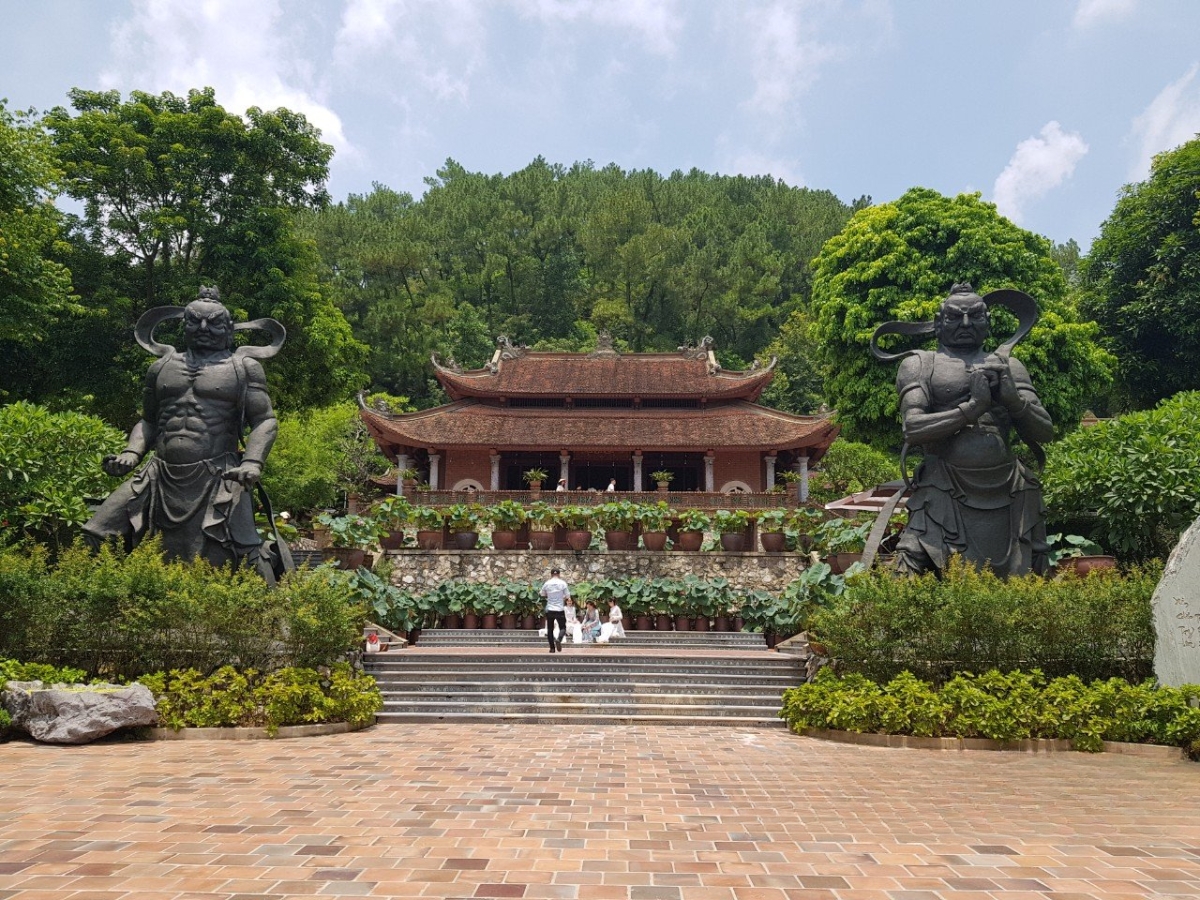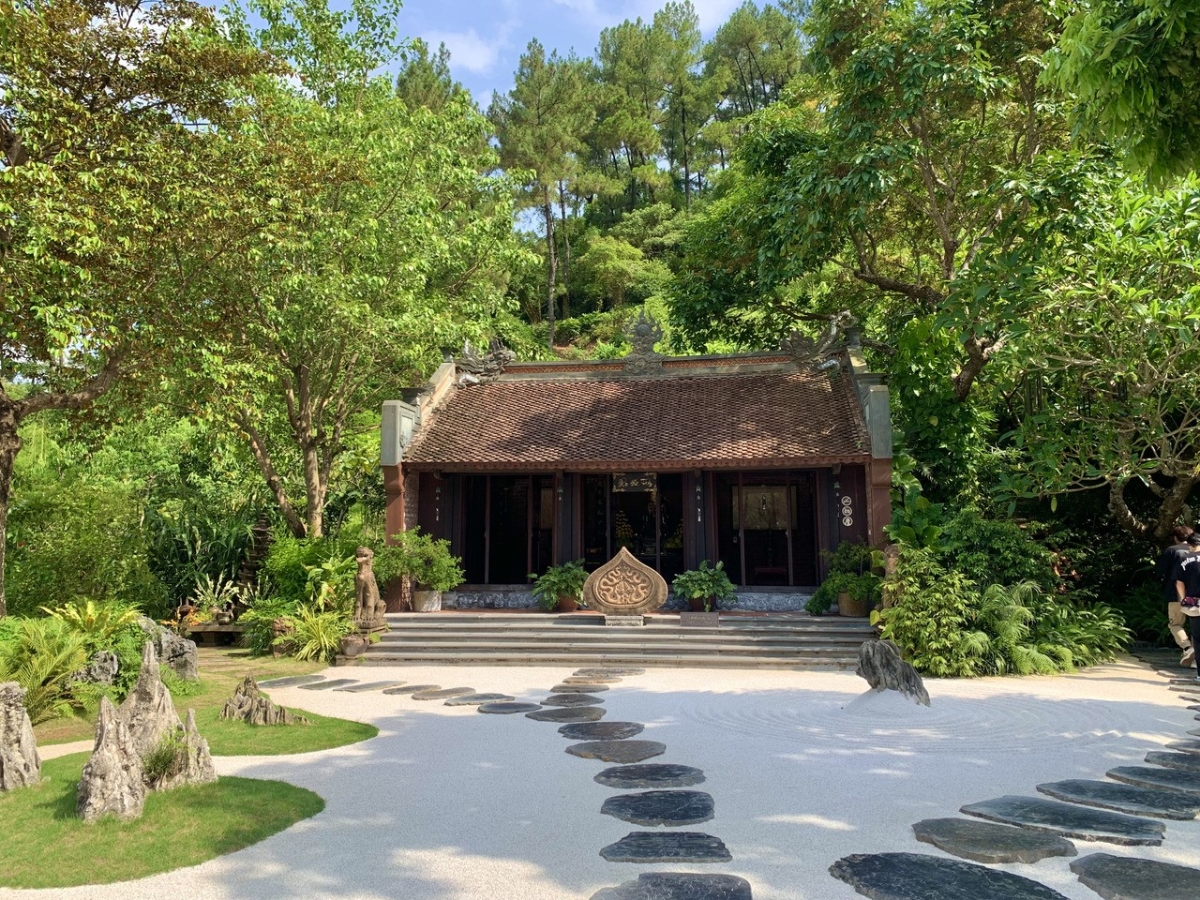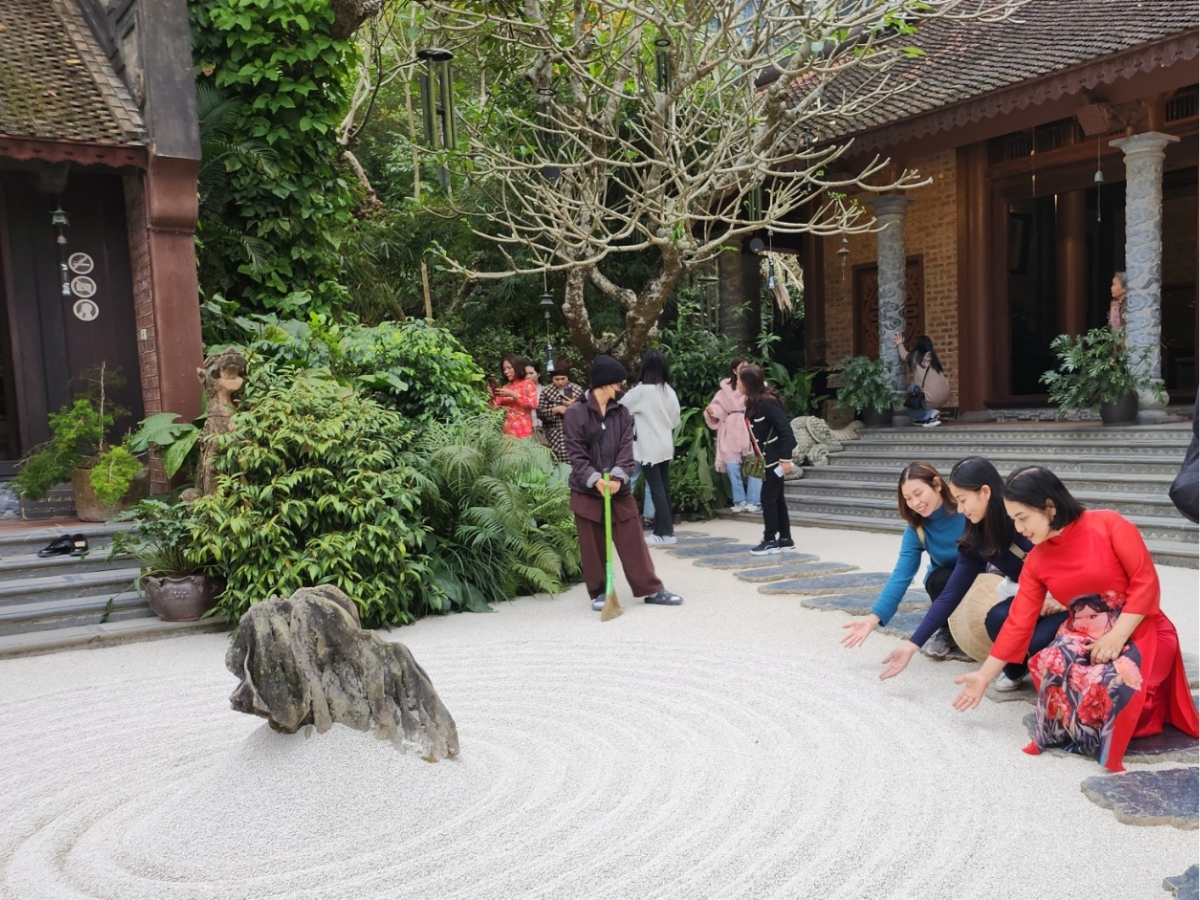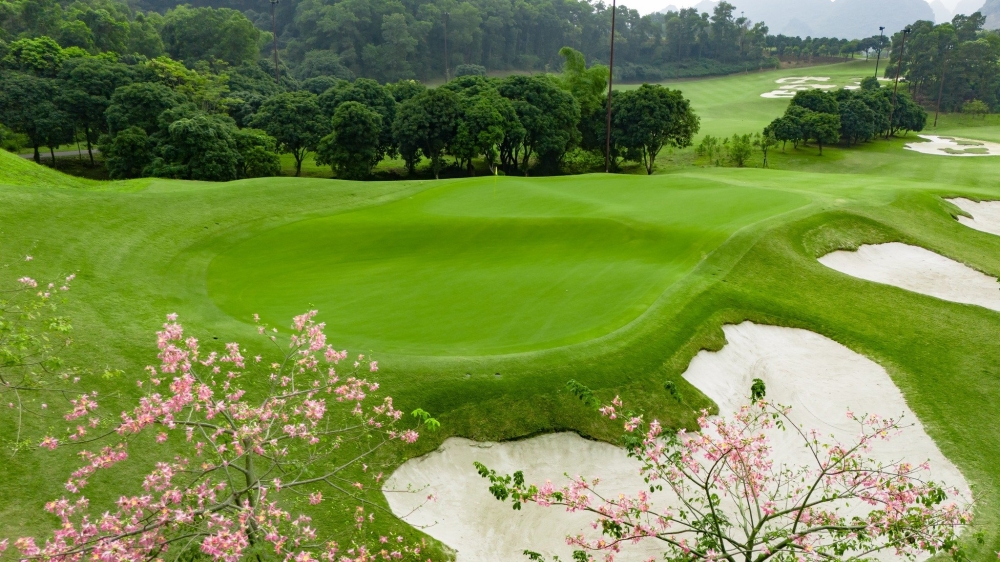1. Dia Tang Phi Lai Temple: Origin and Special Values
1.1. Context and History
Located in Ninh Trung village, Thanh Binh commune, Ninh Binh province, the Dia Tang Ha Nam Temple, also known as Dia Tang Phi Lai Tu, is linked to the transition of time over a thousand years. Previously, the pagoda was known by the name Chua Dung, a large-scale Buddhist center from the Ly-Tran period, with over 100 rooms, bearing traces of the construction and cultural development of the entire region.
The pagoda was built in the 11th century. After experiencing many ups and downs, it was once chosen by Kings Tran and King Tu Duc as a place to stop and rest. After many years of deterioration, since December 2015, Venerable Thich Minh Quang took over and carried out a comprehensive restoration. Since then, the pagoda's appearance has returned to full solemnity, preserving the ancient architectural style and the sacred space of an old pagoda.
1.2. Meaning of the Name
According to Venerable Thich Minh Quang, the name "Dia Tang Phi Lai" means "Ksitigarbha Bodhisattva always comes to this place, or may never come to this place". When Ksitigarbha does not return to a certain place, it means that place has completely become Buddha-land.
1.3. Spiritual and Architectural Values
What creates the distinctive feature of the Dia Tang Ha Nam Temple is its location amidst a vast pine forest, with its back against the mountain and a feng shui position of "back to mountain, facing water". According to ancient feng shui theory, the pagoda has the Azure Dragon on the left and the White Tiger on the right, creating a balanced space both naturally and spiritually.
The pagoda's architecture harmoniously blends the structures with the mountain and forest landscape. Each structure is inspired by Buddhist philosophy, bringing a sense of tranquility and helping visitors calm their minds amidst nature. This space is not only suitable for worship but also helps connect with traditional Vietnamese cultural values and find truly peaceful moments.

Dia Tang Phi Lai Tu Pagoda possesses a "leaning against the mountain, facing the water" terrain. (Source: Collected)
2. Experience of moving and ideal time to visit
2.1. Detailed moving instructions
The distance from Hanoi to Dia Tang Ha Nam Pagoda is about 70 km, suitable for tourists to choose many types of vehicles.If traveling by private vehicle, you just need to go straight along the Cau Gie - Ninh Binh expressway and then turn off at the Phu Ly - Ha Nam exit (National Highway 1A). For those traveling by bus, you can catch a bus at Giap Bat or My Dinh bus stations on the Hanoi - Ninh Binh route on the old National Highway 1A. After that, you continue through Thanh Phong, Thanh Luu, and Liem Son routes to reach the pagoda.
If you want to use public transport, you can take a bus on the Hanoi – Phu Ly route at Giap Bat or My Dinh bus stations, then continue by local bus or taxi to Liem Son commune. The travel time will be longer but the cost is reasonable. Nearby provinces like Ninh Binh, Nam Dinh can also travel along provincial routes to Thanh Liem.
2.2. Opening hours and costs
Dia Tang Ha Nam Pagoda is open from 6:30 AM to 6:30 PM daily, including holidays and Tet. The special point is that the pagoda does not charge an entrance fee; visitors only need to pay for parking and make voluntary donations. This policy reflects the humane and open spirit of the pagoda, creating conditions for everyone to visit, experience, and worship.
The extended opening hours help you easily arrange a reasonable schedule. The most suitable times are early morning when the air is fresh or late afternoon when the sunlight is gentle, creating a more peaceful feeling.
2.3. When to visit
Visiting Dia Tang Ha Nam Pagoda at different times of the year, you will have the opportunity to participate in and experience many unique cultural and spiritual events.
At the beginning of the year, the pagoda is splendidly decorated with countless fresh flowers to celebrate the traditional Tet holiday, creating a bustling and spring-filled atmosphere. In the 6th and 7th lunar months, this is when the pagoda organizes summer retreats, attracting many Buddhist families to register. Notably, on the 30th day of the 7th lunar month, the pagoda will solemnly hold the Vu Lan Festival and the ceremony commemorating the Bodhisattva Ksitigarbha.
Another ideal time to visit is the Mid-Autumn Festival, on the 15th day of the 8th lunar month, when you can admire the full moon and enjoy the peaceful, airy atmosphere. Finally, from the 9th to the 10th lunar month, the pagoda recreates the scene of a rural market with many familiar items, offering a close and interesting experience for visitors.

The 7th and 8th lunar months are ideal times to visit Ksitigarbha Phi Lai Tu Pagoda. (Source: Dan Viet Newspaper)
3. Discover the architecture and prominent pilgrimage sites
3.1. Ancient and exquisite architectural art
The architecture of Ksitigarbha Ha Nam Pagoda is a delicate intersection of traditional Vietnamese art and Buddhist spirit. Materials such as wood, bamboo, rattan, traditional tiles, terracotta, and ceramics are used with warm, muted tones like brown, yellow, and white, creating a cozy, cool space suitable for the local climate. This choice of materials also reflects a philosophy of living in harmony with nature.
A highlight within the grounds is the white pebble-covered courtyard designed with 12 concentric circles, symbolizing the twelve causal links in Buddhist philosophy, forming a meditative path that helps calm the mind upon entering the sacred space. This arrangement utilizes the natural terrain, combined with architectural works that are both harmonious and meaningful.
3.2. Main attractions
The Tam Bao Tower is the key structure of Ksitigarbha Ha Nam Pagoda, housing the statue of Bodhisattva Ksitigarbha with a majestic and compassionate face. This is the central point for ritual activities, where Buddhists and visitors come to offer incense and pray for peace.
The Ancestor Worship House is a place to commemorate the 42 Patriarchs who were associated with and developed the pagoda, expressing gratitude to the predecessors. The temples of Avalokitesvara Bodhisattva, Duc Ong, and Duc Thanh Hien are also stops sought by many, where they entrust their prayers for health and peace. Facilities such as lecture halls, monk/nun quarters, and guest houses cater well to the study and accommodation needs of Buddhist followers from afar.
3.3. Value of artifacts
Ksitigarbha Ha Nam Pagoda currently preserves many valuable artifacts with historical depth, including bricks imprinted with lotus flowers, dragon carvings on wooden columns, and elaborately carved rafters. Additionally, there are time-worn curved roof tiles, statues of the Garuda divine bird, and stone steles carved with characteristic phoenix and dragon motifs.

Precious relics at Ha Nam Dia Tang Pagoda. (Source: Collected)
Important notes for the trip
Attire and luggage
When visiting Ha Nam Dia Tang Pagoda, choosing appropriate attire is crucial to show respect for the sacred space. You should prioritize modest, elegant clothing, avoiding overly short items or off-the-shoulder tops. Easy-to-remove footwear will be convenient for entering main halls and altars.
Regarding luggage, just bring drinking water, a hat if traveling during the sunny season, and avoid bringing strong-smelling food. Absolutely do not litter and help keep the pagoda grounds clean and beautiful. A small bag for personal items is sufficient, as the pagoda's atmosphere emphasizes simplicity and elegance.
Rituals and customs
At Ha Nam Dia Tang Pagoda, adhering to rituals and customs is essential. When moving around the pagoda, you should maintain a gentle demeanor, speak softly, and remain quiet in the worship areas. When taking photos, choose appropriate angles, avoiding recording in restricted areas or during major ceremonies.
When performing incense offering rituals, you can refer to the procedures beforehand to ensure solemnity. Do not touch statues or artifacts, and refrain from playing or laughing loudly within the pagoda grounds to maintain the sacred atmosphere.
Suggestions for a complete experience
Ha Nam Dia Tang Pagoda is suitable for both tourists passionate about cultural experiences and Buddhists seeking spiritual connection. It is an opportunity to learn about the history of Vietnamese Buddhism, admire unique architecture, and feel the peaceful atmosphere. If traveling with family, you can combine a visit with Sun World Ha Nam – a modern entertainment complex near the pagoda, offering both spiritual harmony and recreational fun.

Opportunity to discover Vietnamese Buddhist history at Diu Tang Phi Lai Tu Pagoda. (Source: Collected)
Spend time sitting peacefully within the pagoda grounds, listening to the sound of the pine forest wind, you will feel the spreading serenity. Ha Nam's Dia Tang Pagoda is not just a spiritual tourist destination but also a place to find peace again, escape the daily noise, and return to the tranquil beauty amidst the mountains and forests.








